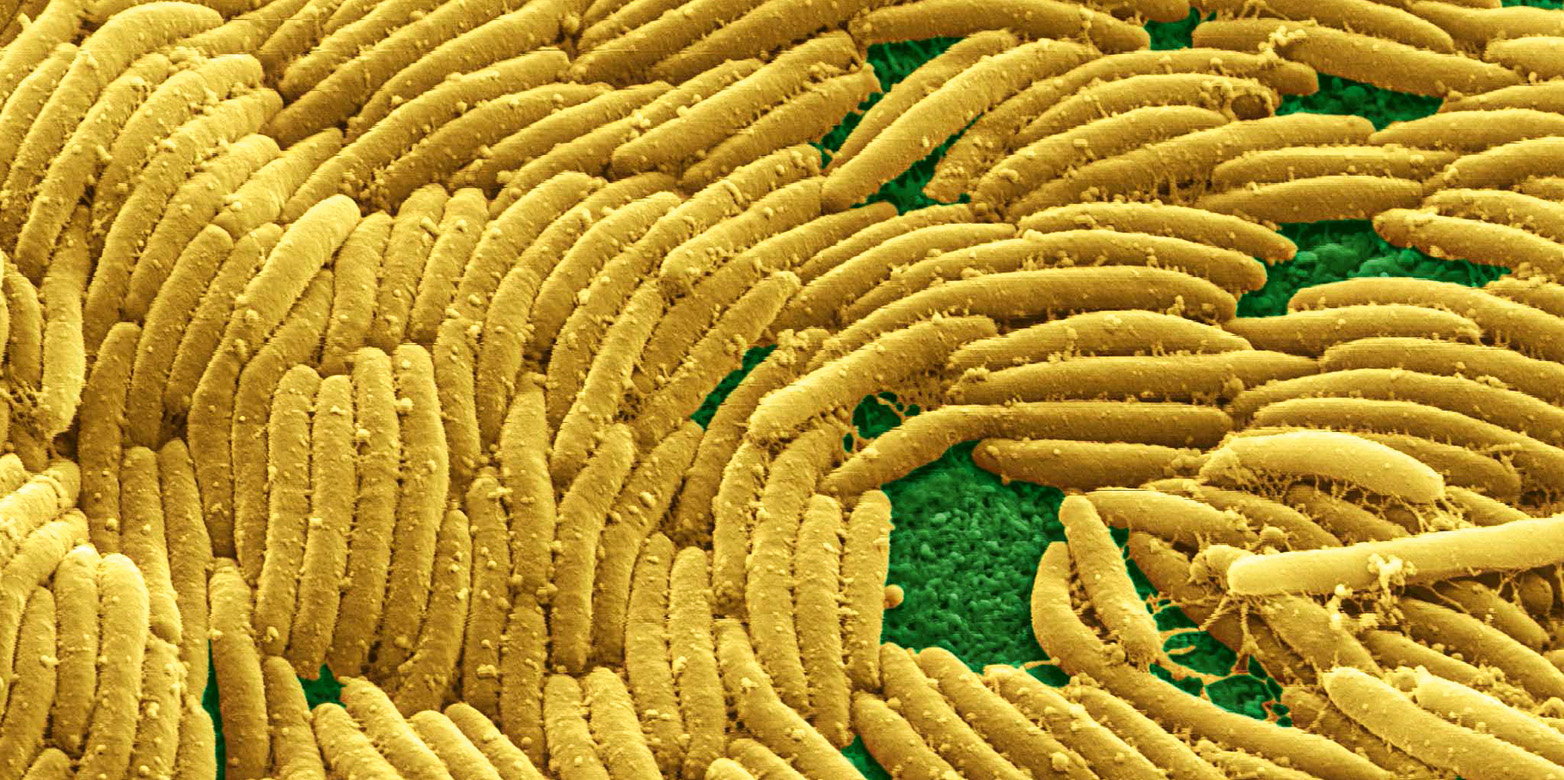Shaking the foundations of life
Evolution never stops – and disruptions can speed up the process. Now ETH researchers are delving deeper into the secrets of evolutionary change.

The evolution of life on Earth has taken a long, long time. Protocells – the precursors of today’s unicellular organisms – formed around four billion years ago, eventually evolving into bacteria and archaea. The first eukaryotes emerged two billion years ago, providing the basis for more complex, multicellular organisms. As life evolved, it faced numerous disruptions in the form of meteorites, volcanic eruptions, ice ages and periods of great heat. Our planet has experienced at least five mass extinction events over its long history – yet still life has continued, undaunted.
Change is one of the driving forces behind evolution: all organisms, from bacteria to elephants, must constantly change and adapt to deal with challenges such as increasing competition for food and space, food scarcity, environmental changes and climate change. Failure to adapt means extinction.
Success through cooperation
Bacteria are ideal for investigating evolutionary processes because they are small and have very short generation times. ETH professor Greg Velicer opted for the soil bacterium Myxococcus xanthus as a model organism because it forms cooperative groups and hunts other microorganisms. When food becomes scarce, thousands of Myxococcus cells aggregate into a fruiting body and produce spores, which can survive in the soil for long periods of time under stressful conditions.
“It’s now clear that microbes, far from being isolated loners, are actually highly social organisms. Microbes cooperate with, deceive and fight other microbes, both within their own intra-specific social groups and within extremely complex multi-species communities,” says Velicer, Professor of Evolutionary Biology at the Institute of Integrative Biology. These findings also apply to pathogens. For example, cells of the dreaded hospital bug Pseudomonas aeruginosa or the cholera pathogen Vibrio cholerae communicate with one another in order to form resistant biofilms and in producing cytotoxic agents.
“One of the key questions for evolutionary biologists is how cooperation evolves over time, and especially how it persists in the face of selfish, non-cooperative behaviour,” says Velicer.
A while back, he and his colleagues were able to show that some individual bacteria in groups of Myxococcus cells exhibit cheating behaviour towards other cells in the same group: these mutant cells – or cheats – do not themselves produce fruiting bodies or spores. Mix these cheats with cooperative, spore-forming cells, however, and they benefit from this work without making any contribution of their own – in other words, without providing the required energy in the form of chemical messengers and enzymes. This enables the cheats to increase their frequency in a population at virtually no cost to themselves, thus threatening the survival of the cooperative system. “We’ve even seen cases of cheating that have driven entire populations of cooperators and cheats to extinction,” says Velicer.
Nevertheless, cooperation continues to be a successful evolutionary strategy that has proven to be evolutionarily stable against such cheating across many biological systems. For example, cooperative Myxococcus bacteria can quickly give rise to social adaptations, as Velicer discovered in a further study. He observed how a strain that began by exhibiting cooperative behaviours evolved first to become a cheat and then later evolved back into a cooperating strain – in fact, a new, better-adapted form of cooperating strain that was highly resistant to its own progenitors’ attempts at cheating. A subsequent study by one of Velicer’s colleagues showed that cooperation was restored thanks to a single mutation in a previously unknown small RNA (sRNA). It emerged that this sRNA plays an essential role in the regulation of fruiting-body formation.
Dramatic doubling of the genome
Mutations in DNA occur spontaneously and randomly, yet they are fundamental to evolution. While most are inconsequential and have no effect on the organism, some genetic changes are more profound and affect the entire genome. One example of such a sudden and dramatic event is the duplication of the entire set of chromosomes. During meiosis – the cell division of germ cells – the chromosomes do not split into the daughter cells evenly. Chromosomes are threads of DNA wrapped around a protein scaffold. A normal human cell has 46 chromosomes: two sex chromosomes and 22 pairs of non-sex chromosomes.
When meiosis goes wrong, one of the daughter cells gets all the chromosomes and thus all the genetic material of the parent cell. It remains diploid, while the other cell receives nothing and dies. If two diploid germ cells then fuse, this produces an organism with cells that have four sets of chromosomes. The organism is now polyploid, which poses significant challenges in regard to cell biology and the organism’s physiology.

Kirsten Bomblies, Professor of Plant Evolutionary Genetics at ETH Zurich’s Department of Biology, has been investigating this phenomenon: “Polyploidy can occur randomly or due to environmental changes such as drought, cold or salt stress.” It is common among plants, though less frequent in fish and amphibians. There is only one example of a polyploid mammal – though even this case is heavily disputed. Most polyploids are evolutionary dead ends but some acquire an advantage. “Plants with multiple sets of chromosomes are far more resistant to drought and salt than their predecessors,” she explains. Polyploid plants also have larger fruits and seeds, which makes them an interesting model for breeding new varieties of crops with higher yields and resilience. In fact, many important food crops have already been bred to be polyploid: wheat, potatoes, maize and coffee all have multiple sets of chromosomes.
In one of her projects, Bomblies is investigating why polyploid plants are so stress-tolerant. One reason is cell size. Polyploid cells are larger than diploid cells, and this affects their interactions with the environment, such as the exchange of gases and water. “For an evolutionary biologist, polyploidy is as an absolutely fascinating example of disruption,” Bomblies says. “It’s a profound evolutionary force because it changes everything in an organism’s biology.”
This text has been published in the 21/01 issue of the Globe magazine.
Comments
No comments yet